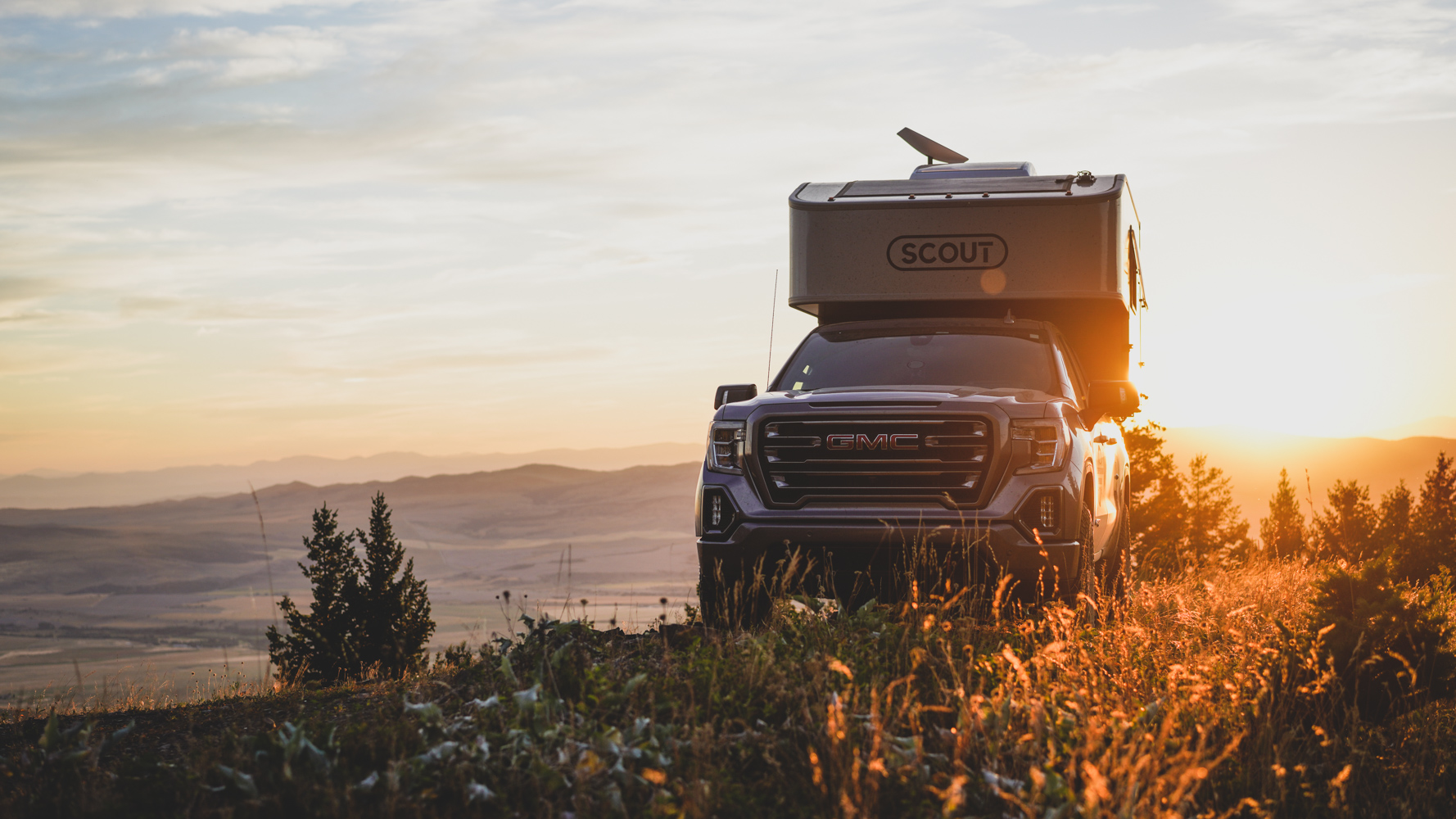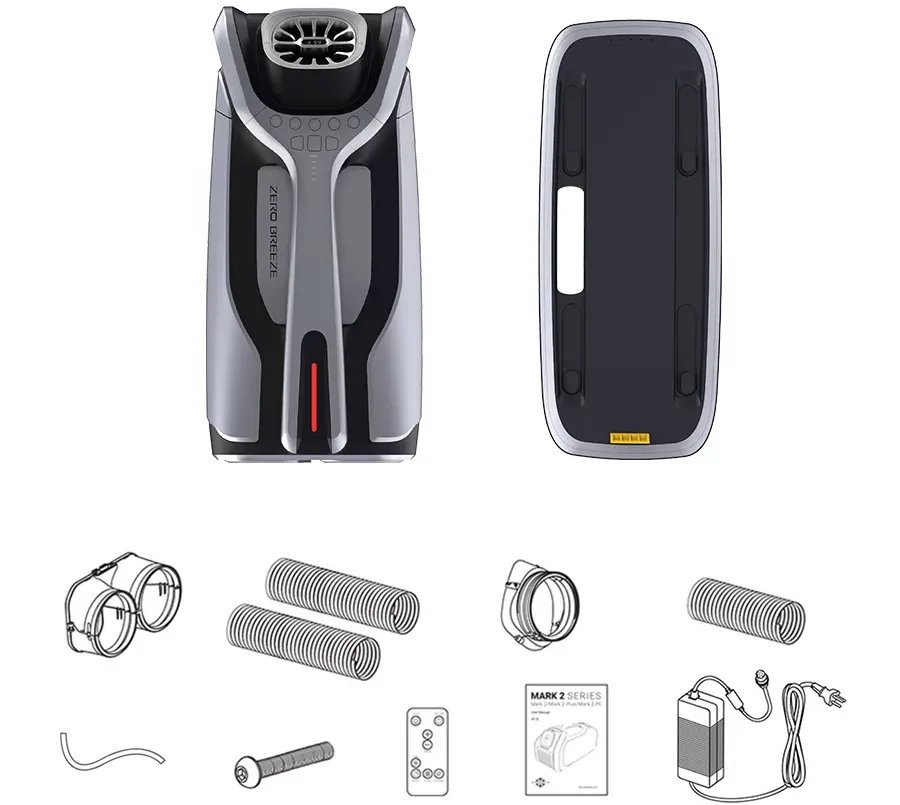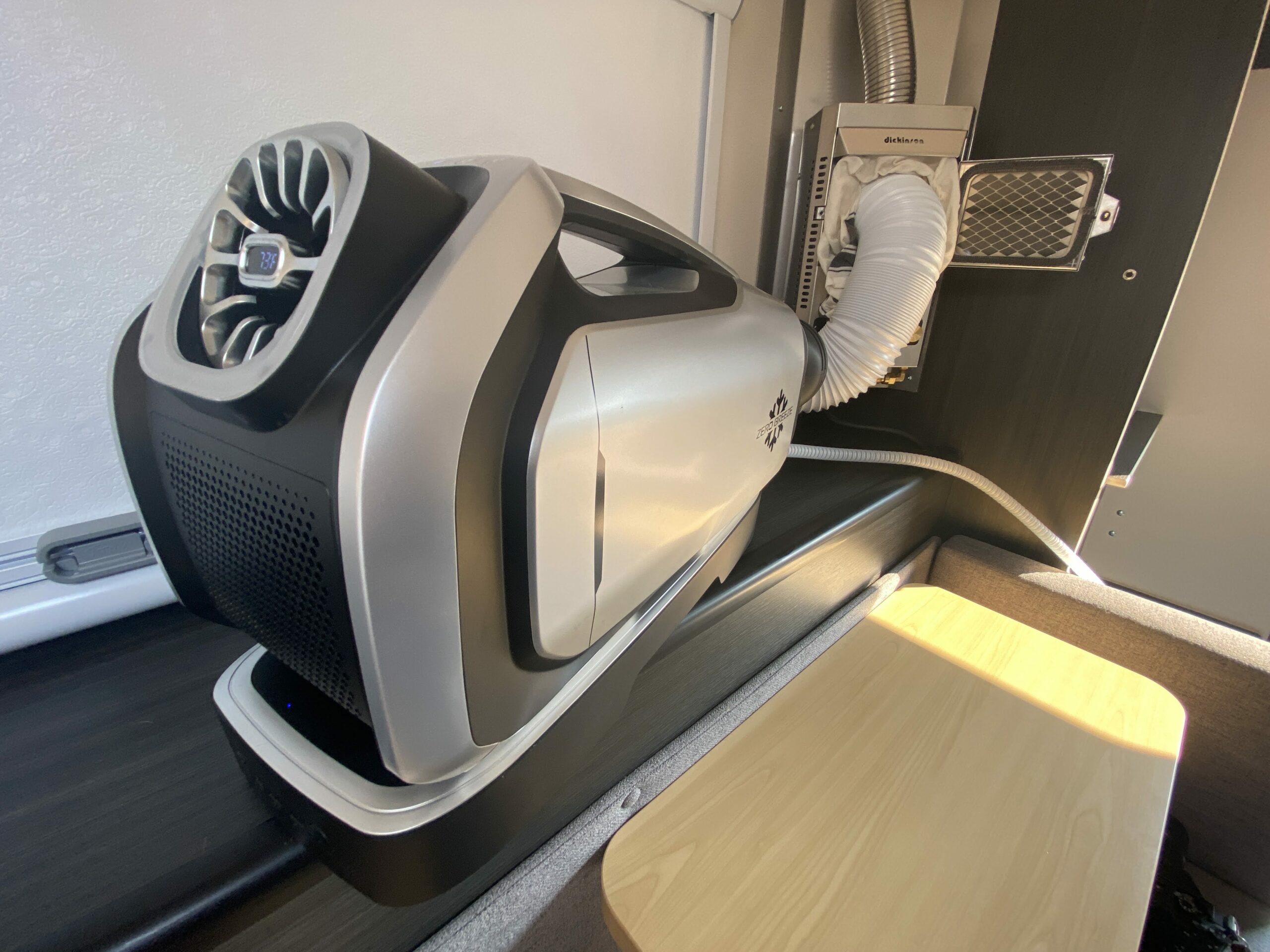I took two months to explore the West in my AT4 Sierra with a Scout Kenai camper. The goal was to work and live in the slide-in nearly daily, with only occasional nights in other accommodations. For that to work, I needed a way to take a shower, pack out human waste, and to be able to get good sleep. The Scout took care of all those, except getting good sleep in hotter conditions, as it usually takes a few hours after bedtime for the night temps to cool enough for quality slumber. To help with quality sleep, I decided to test the Zero Breeze Portable Air Conditioner.

The Zero Breeze Mark 2 is their second-generation product, which uses 24 volts to improve efficiency and maximize BTU from such a small package. The fan, compressor, evaporator, condenser, and control module are all contained within the plastic IPX4 moisture-sealed enclosure. Because this is a real air conditioner, it also requires fitting two air ducts and a condensation drain hose. The air ducts allow the unit to bring in outside air across the condenser and another vent to expel the hot air outside and away from the living area. The unit also works like recirculation in the car, drawing already-cooled air back across the evaporator and onto the occupant. The MKII is not a swamp cooler; it is a real AC requiring more power and additional ducting.
For power, there are multiple methods of operating the Zero Breeze portable air conditioner, including running off of shore power at 120 volts in a campsite or from the vehicle inverter or generator. It is also possible (and how I operated the unit) to run off the house batteries and inverter in the camper or vehicle. The self-contained option is buying the 35 Ah lithium-ion battery module that will run the unit for about four hours. I preferred using a combination of both the battery module and the portable power unit/solar in the Scout, which provided a full night’s sleep of AC if required. I would like to see the sleep mode not just dim the lights and display but also activate a three-hour timer, which would gently shut down the unit after the night air cools and the AC is no longer needed (thus saving battery power or needing to wake up to shut it off).


There are multiple options for powering the Zero Breeze, including wall power, house system with solar, a power station, or the optional and stackable lithium battery packs.
The Zero Breeze is best described as a personal AC, not an area AC. If the Scout camper was hot in the afternoon, it was better to open all the windows and point the Zero Breeze directly at me to make working comfortable. For sleeping, this is where the unit made all the difference. I would position the AC at bed level and face the fan across the head, neck, and shoulders. This strategy even works for two people and puts you to sleep with the 52dB fan and compressor (white) noise and cold air. I would usually wake with a bit of a chill and turn the AC off a few hours later, but it did the trick.
For most applications, not much installation is required, as the ducting can be run outside of a tent flap. It is a bit more involved in a camper or trailer, but I found a wonderful hack in using the Dickinson Marine fireplace/heater flume to exhaust the hot condenser air. The Zero Breeze survived months of operation and transport, but I do recommend being intentional about lashing or storing the unit when not in use. It weighs 16 pounds without the battery and should be properly secured so as not to cause vehicle or AC damage. The AC will not allow camping at 110 degrees, but it will extend the season or allow camping at lower elevations or higher humidity climates. With overlanding getting more comfortable, home really is on the road.
Zerobreeze.com | $1,499
Our No Compromise Clause: We do not accept advertorial content or allow advertising to influence our coverage, and our contributors are guaranteed editorial independence. Overland International may earn a small commission from affiliate links included in this article. We appreciate your support.


